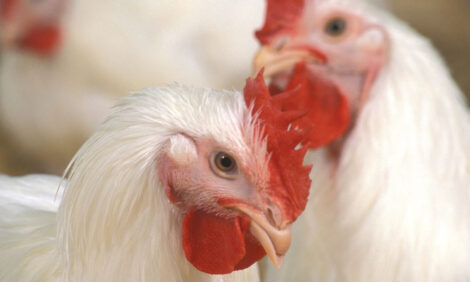



PUFA Enrichment in Laying Hens Fed an Extruded Flax-Enriched Diet
Feeding hens different levels of a dietary source of n-3 polyunsaturated fatty acid (PUFA), researchers in Edmonton, Canada, found significant differences in egg PUFA level after 12 days without an effect on the PUFA concentration in the hens' plasma. PUFAs can have beneficial effects on human health and raising their concentration in eggs is one way to boost people's intake of PUFA.The time required to reach a plateau of n-3 polyunsaturated fatty acid (PUFA) concentration in plasma and egg yolk and dynamics of the enrichment process were examined in laying hens by S. Nain and colleagues at the University of Edmonton in Canada.
In their paper published in Poultry Science, they explain that a group of 75 Lohmann White Leghorn layers (65 weeks) were fed one of three diets: control, moderate or high n-3 PUFA-enriched diet for 18 days. Diets provided similar metabolisable energy (ME) and crude protein (CP) and contained 0, 7.5 or 15 per cent LinPRO (as a source of n-3 PUFA), respectively.
Prior to dietary treatment, baseline values were established for the bodyweight, fatty acid composition in egg yolk on a whole-egg basis, and in plasma. These measurements were repeated at six, 12, and 18 days of feeding. Enzymatic conversion rates of linolenic acid (LNA) to long-chain fatty acids were calculated. Data were analyzed with Proc Mixed of SAS, and broken stick analysis was used to determine n-3 PUFA plateau using the NLIN procedure of SAS (P<0.05).
The total egg yolk n-3 PUFA reached a plateau of 343.7mg per egg and 272.9mg per egg after 6.6 and 5.9 days on the high and moderate diets, respectively. In blood plasma, the n-3 PUFA concentrations reached saturation in 7.2 days with 0.93mg per mL and 0.67mg per mL on high and moderate diets, respectively.
The transfer efficiency of total n-3 PUFA from the diet to the egg yolk was calculated as 55.6 per cent in control birds, 30.5 per cent in moderate birds and 22.2 per cent in high birds, demonstrating reduced transfer efficiency of n-3 PUFA as inclusion in the feed increases.
Final egg yolk n-3 PUFA concentrations had a coefficient of variation (CV) of 16.5 per cent compared with 28.5 per cent for plasma.
After 12 days, the long-chain n-3 PUFA – eicosapentaenoic acid (EPA), docosapentaenoic acid (DPA) and docosahexaenoic acid (DHA) – were significantly higher in egg yolk from hens on the moderate and high enriched diets than those from hens fed the control diet, whereas in plasma values did not differ.
Broken stick analysis of egg enrichment indicated that high birds reached the target threshold of 300mg of total n-3 PUFA per egg in five days.
A significant increase in EPA, DPA and DHA and reduction in arachidonic acid content in egg yolks from hens fed enriched diets compared with the control diet confirms competition for enzymes during post-absorptive modification of these fatty acids.
Nain and co-authors comment that their work contributes to the understanding of individual hen effects on n-3 PUFA absorption and the effect of level of dietary enrichment with an extruded flax product on final yolk n-3 PUFA concentration.
Reference
Nain S., R.A. Renema, D.R. Korver and M.J. Zuidhof. 2012. Characterization of the n-3 polyunsaturated fatty acid enrichment in laying hens fed an extruded flax enrichment source. Poult. Sci., 91(7):1720-1732. doi: 10.3382/ps.2011-02048
Further ReadingYou can view the full report (fee payable) by clicking here. |
September 2012








